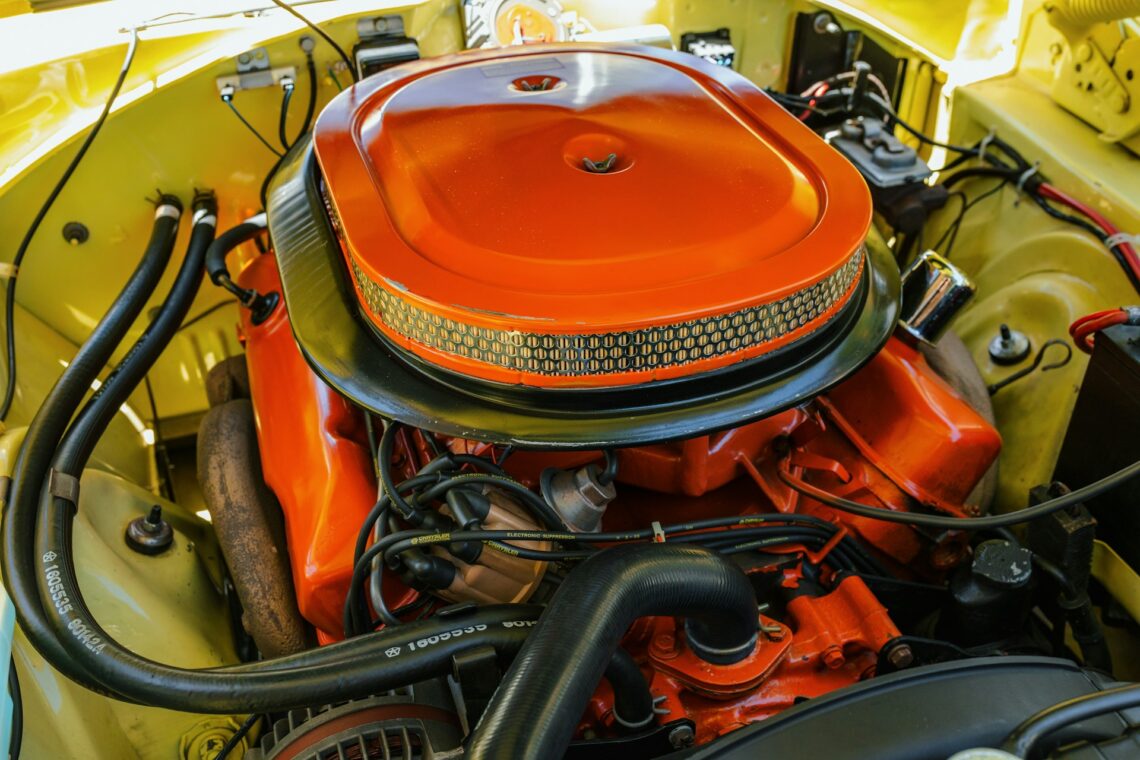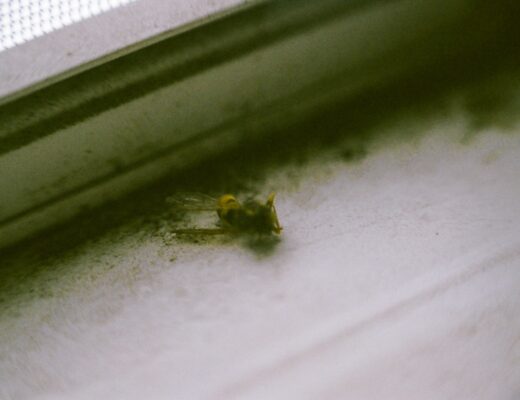Small engines power some of our most essential tools—from lawnmowers and chainsaws to generators and pressure washers.
These compact powerhouses work hard under demanding conditions, yet many owners overlook the simple maintenance steps that could dramatically extend their equipment’s lifespan.
Proper small engine maintenance isn’t just about preventing breakdowns; it’s about maximizing performance, reducing repair costs, and ensuring your equipment starts reliably when you need it most.
Regular care can transform a temperamental engine into a dependable workhorse that serves you for decades rather than years. The difference between engines that last 5 years versus 20 years often comes down to consistent maintenance habits.
Small engines that receive proper care maintain better fuel efficiency, produce lower emissions, and retain higher resale value. More importantly, well-maintained equipment reduces the frustration of mid-project failures and costly emergency repairs.
This comprehensive approach to small engine maintenance covers six critical areas that directly impact longevity and performance. Each section provides specific, actionable steps you can implement immediately to protect your investment and keep your equipment running smoothly.
Regular Oil Changes Keep Your Engine Protected
Oil serves as your engine’s lifeblood, lubricating moving parts and preventing costly damage from friction and heat. Fresh oil creates a protective barrier between metal components, while old oil becomes contaminated with debris and loses its protective properties.
Checking Oil Levels and Quality
Check your oil level before each use by removing the dipstick or oil fill cap. Clean oil appears amber or black but flows smoothly, while contaminated oil looks thick, gritty, or contains visible particles.
Low oil levels expose engine components to excessive wear, while overfilling can cause performance issues and seal damage.
Oil Change Intervals and Procedures
For new engines:
- Change oil after the first 5 hours of operation
- This removes metal particles from the initial break-in
For established engines:
- Change oil every 25-50 hours of operation
- Change at least once per season, even with minimal use
- More frequent changes in dusty conditions
Oil change steps:
- Run the engine for 2-3 minutes to warm the oil
- Remove the drain plug and allow complete drainage
- Replace the drain plug with a new gasket if needed
- Add recommended oil type and quantity
- Check level and adjust as needed
Choosing the Right Oil Type
Use SAE 30 oil for temperatures above 40°F, or 5W-30 for variable temperature conditions. Synthetic oils provide superior protection but cost more upfront.
Always consult your owner’s manual for manufacturer specifications, as using incorrect oil viscosity can void warranties and cause engine damage.
Air Filter Maintenance Ensures Optimal Performance
Clean air filters prevent dirt, debris, and contaminants from entering your engine’s combustion chamber. A clogged filter restricts airflow, causing poor performance, increased fuel consumption, and potential engine damage from debris ingestion.
Inspection and Cleaning Schedule
Inspect air filters every 10 hours of operation or monthly during regular use. Paper filters should appear white or light-colored when clean, while foam filters should maintain their original color and flexibility. Dark, oily, or damaged filters require immediate attention.
Paper Filter Maintenance
Cleaning paper filters:
- Remove filter from housing
- Tap gently to remove loose debris
- Never wash paper filters with water
- Hold the filter up to the light to check for holes or tears
- Replace if damaged or excessively dirty
Replacement indicators:
- Visible tears or holes
- Heavy soil buildup that doesn’t remove with tapping
- Collapsed or deformed filter material
Foam Filter Care
Foam filter cleaning process:
- Remove the foam element from the housing
- Wash in warm, soapy water
- Rinse thoroughly and squeeze gently
- Allow to air dry completely
- Apply light coating of clean engine oil
- Squeeze to distribute oil evenly
- Reinstall when properly oiled
Replace foam filters when they become brittle, torn, or lose their ability to spring back after compression.
Spark Plug Care for Reliable Starting
Spark plugs ignite the fuel-air mixture that powers your engine. Clean, properly gapped plugs ensure reliable starting, smooth operation, and optimal fuel efficiency. Fouled or worn plugs cause hard starting, misfiring, and reduced performance.
Spark Plug Inspection Techniques
Remove spark plugs when the engine is cool to prevent thread damage. Examine the electrode and insulator for these conditions:
Normal wear indicators:
- Light brown or gray deposits
- Slight electrode wear
- Clean insulator appearance
Problem indicators:
- Heavy carbon buildup (black, sooty deposits)
- Oil fouling (wet, oily appearance)
- Excessive electrode wear or rounded edges
- Cracked or damaged insulator
Gap Adjustment and Replacement
Check the spark plug gap using a feeler gauge. Most small engines require a 0.030″ gap, but consult your manual for exact specifications. Adjust the gap by gently bending the ground electrode—never bend the center electrode.
Replacement schedule:
- Every 100 hours of operation
- Annually for seasonal equipment
- Immediately, if damaged or heavily fouled
Installation tips:
- The thread plugs in by hand first to prevent cross-threading
- Tighten to the manufacturer’s torque specification
- Use dielectric grease on the plug boot to prevent corrosion
Troubleshooting Common Issues
Black, sooty plugs indicate rich fuel mixture or air filter problems. White, chalky deposits suggest a lean mixture or overheating. Oil-fouled plugs point to worn rings or valve guides requiring professional attention.
Fuel System Maintenance Prevents Costly Problems
Clean fuel systems deliver the proper air-fuel mixture your engine needs for optimal performance. Contaminated fuel, clogged filters, and degraded components cause starting problems, poor performance, and expensive repairs.
Fuel Quality and Storage
Use fresh gasoline with no more than 10% ethanol content. Ethanol attracts moisture, which separates from gasoline and causes corrosion in fuel system components. Higher ethanol blends can damage rubber seals and plastic components in older engines.
Proper fuel storage:
- Store gasoline in approved containers
- Add fuel stabilizer for storage over 30 days
- Keep containers in cool, dry locations away from ignition sources
- Use stored fuel within one year maximum
Fuel Filter Replacement
Replace fuel filters annually or every 100 hours of operation. Clogged filters restrict fuel flow, causing lean running conditions that can damage engines. Some engines have multiple filters—replace all filters during service.
Filter replacement steps:
- Shut off the fuel valve if equipped
- Remove old filter, noting flow direction
- Install a new filter with the arrow pointing toward the carburetor
- Secure connections and check for leaks
- Open the fuel valve and test the operation
Carburetor Maintenance
Clean carburetors annually or whenever fuel flow problems occur. Remove the air filter and spray carburetor cleaner into the air intake while running the engine at idle speed.
For thorough cleaning, remove the carburetor bowl and clean all passages with appropriate solvents.
Seasonal carburetor care:
- Run the engine dry before winter storage
- Add a fuel stabilizer if keeping fuel in the system
- Professional cleaning every 2-3 years for optimal performance
Cooling System Care Prevents Overheating
Proper cooling prevents engine damage from excessive heat buildup. Air-cooled small engines rely on cooling fins and air circulation to maintain safe operating temperatures.
Blocked cooling passages cause overheating, reduced performance, and catastrophic engine failure.
Cleaning Cooling Fins and Air Passages
Remove debris from cooling fins after every 10 hours of operation or before each use in dusty conditions. Use compressed air, soft brushes, or wooden tools to avoid damaging delicate fin structures.
Cleaning procedure:
- Allow the engine to cool completely
- Remove the engine shroud and air filter housing
- Blow debris away from the engine using compressed air
- Use a soft brush for stubborn buildup
- Pay special attention to areas between fins
- Reassemble all components securely
Maintaining Proper Airflow
Keep air intake screens clear of debris and ensure cooling shrouds remain properly installed. Missing or damaged shrouds disrupt airflow patterns and can cause localized overheating. Replace damaged shrouds immediately to maintain proper cooling.
Temperature Monitoring
Learn to recognize overheating symptoms:
- Loss of power during operation
- Engine knocking or pinging sounds
- Visible discoloration of engine components
- Sweet smell from overheated metal
Stop operation immediately if overheating occurs and identify the cause before resuming use.
Storage and Seasonal Preparation Tips
Proper storage procedures protect your engine during periods of non-use and ensure reliable starting when you need your equipment again. Seasonal preparation prevents fuel system problems, corrosion, and component degradation.
Pre-Storage Preparation
Complete these steps before storing any small engine:
Fuel system preparation:
- Add fuel stabilizer and run the engine for 5 minutes to distribute
- For long-term storage, run the engine until the fuel tank empties completely
- Remove fuel from the carburetor bowl if equipped with a drain
Oil system preparation:
- Change oil and filter before storage
- Fresh oil prevents acid buildup during storage
- Run the engine briefly to circulate new oil
General preparation:
- Clean exterior surfaces thoroughly
- Apply light oil to exposed metal surfaces
- Remove or charge the battery if equipped
Storage Environment Considerations
Store equipment in clean, dry locations protected from temperature extremes. Avoid areas with high humidity, which promotes corrosion and fuel degradation. Cover equipment with breathable materials that prevent dust accumulation while allowing air circulation.
Spring Startup Procedures
Pre-startup checklist:
- Check oil level and condition
- Install fresh or stabilized fuel
- Inspect the air filter condition
- Check the spark plug connection
- Verify that all safety equipment functions properly
- Test all control cables and linkages
Initial startup:
- Prime is equipped with a primer bulb
- Set choke according to temperature conditions
- Start and allow the engine to warm up before loading
- Check for unusual noises, vibrations, or leaks
Run the engine at idle for several minutes during the first startup to allow oil circulation and component expansion before applying full load.
Professional Service and Long-Term Care
While regular maintenance handles most small engine needs, professional service ensures optimal performance and identifies potential problems before they cause expensive failures.
Establishing a relationship with a qualified service technician provides valuable expertise for complex issues.
When to Seek Professional Help
Professional service becomes necessary for these situations:
- Engine performance doesn’t improve after basic maintenance
- Compression loss is indicated by hard starting or power reduction
- Unusual noises or vibrations during operation
- Visible damage to engine components
- Carburetor rebuilds or internal adjustments
Annual Professional Inspection
Schedule professional inspections annually for commercial equipment or engines with high operating hours. Technicians can perform compression tests, carburetor adjustments, and valve clearance checks that maintain peak performance.
Warranty Considerations
Maintain detailed records of all maintenance performed, including dates, hours, and parts used. Many manufacturers require proof of proper maintenance for warranty claims. Use only manufacturer-approved parts and fluids to avoid voiding warranty coverage.
Parts Replacement and Upgrades
Replace worn components with genuine or equivalent quality parts. Cheap aftermarket parts may save money initially, but often fail prematurely and can damage other engine components. Keep spare filters, spark plugs, and oil on hand for routine maintenance.
Maximize Your Engine’s Potential Through Consistent Care
Small engine maintenance requires minimal time investment but delivers substantial returns in reliability, performance, and longevity. The six maintenance areas covered here form the foundation of effective engine care, but consistency makes the difference between adequate and exceptional results.
Start implementing these practices immediately, even if your equipment is older or hasn’t received regular maintenance. Most engines respond well to improved care, regardless of their current condition. Create a maintenance schedule that fits your usage patterns and stick to it consistently.
Document your maintenance activities to track patterns and identify potential issues early. This record-keeping helps with warranty claims and provides valuable information when professional service becomes necessary.
Remember that prevention costs far less than repair. The time spent on regular maintenance prevents the frustration of equipment failure and the expense of emergency repairs. Your commitment to proper care today determines whether your small engine serves you reliably for years or becomes an expensive problem requiring premature replacement.
To learn more about specific maintenance procedures for your equipment, consult your owner’s manual or contact a qualified service technician. Investing in proper small engine maintenance protects your equipment investment and ensures reliable performance when you need it most.







